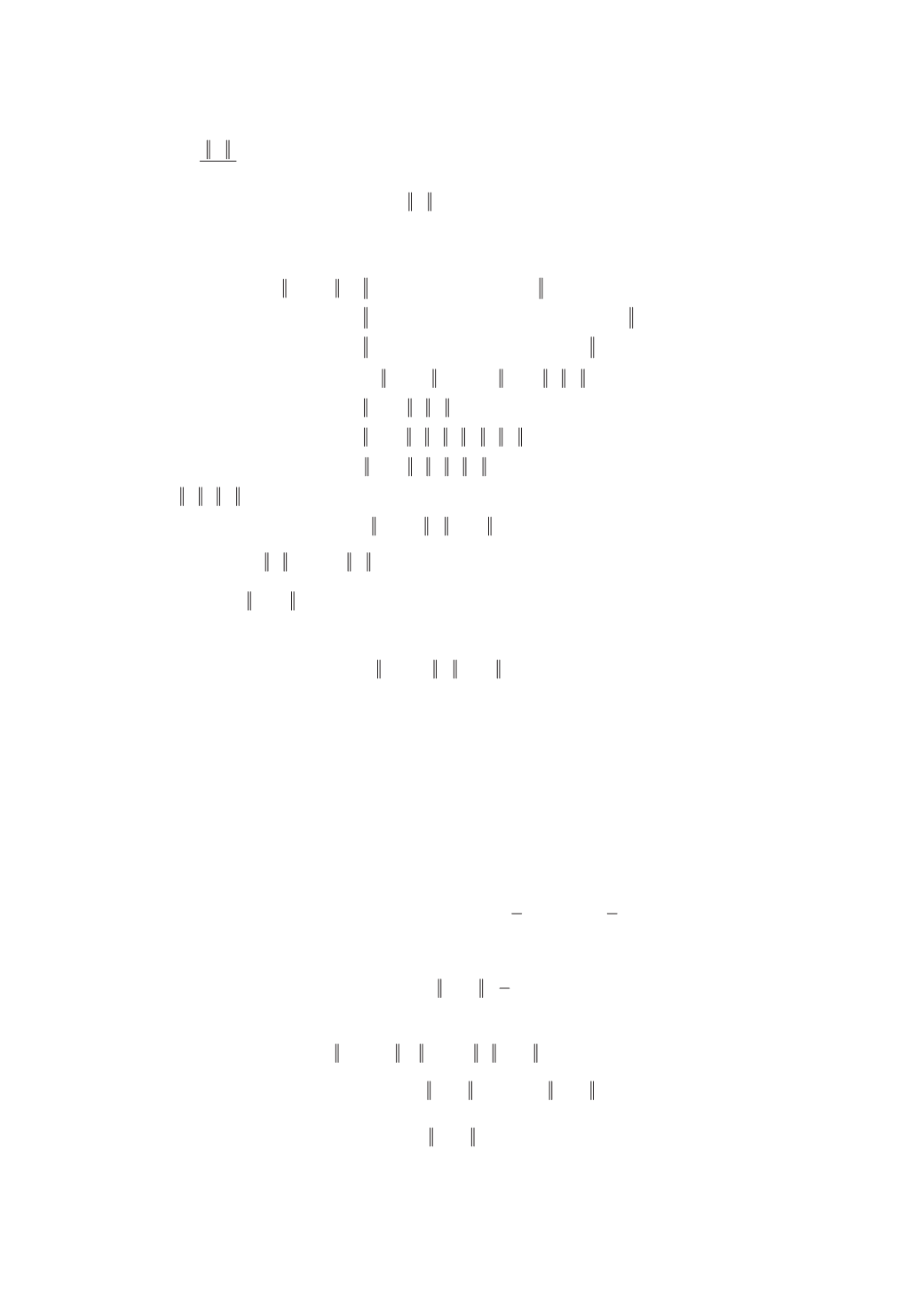
403
We let
,
1
n
n
n
u
H
D
cc
so
0
n
H
t
and
0
n
H
o
as
.
n
of
From this we get
1 .
n
n
n
u
H
D
cc
(2.4)
Since
1
T
is a quasi-nonexpansive mapping, by the triangle inequality, condition
( ),
i
(2.3) and (2.4) we obtain
that
1
n
x p
1
1
n n
n n
n
T y
x u p
D
D
1
1
1
n n
n n
n
n
n
T y
y u p T p p
D
D
D
D
1
1
n
n
n
n
n
T y p
y p u
D
D
1
n
n
n
n
n
Ty p
y p u
D
D
d
n
n
y p u
d
n
n
n
n
x p v u u
c
c
d
1 .
n
n
n
n
n
x p v u
H
D
c
(2.5)
Let
1 .
n
n
n
n
n
b v u
H
D
c
Therefore
1
.
n
n
n
x p x p b
d
(2.6)
By assumption that
1
,
n
n
v
f
f
¦
1
,
n
n
u
f
c
f
¦
1
1
n
n
D
f
f
¦
and
^ `
n
H
is bounded, thus
1
.
n
n
b
f
f
¦
Hence
by Lemma 1.8
lim
n
n
x p
of
exists. By (2.6) and induction, we obtain, for
,
1
m n
t
and
1
2
p F T F T
that
1
.
m n
n m
n
i
i n
x
p x p
b
d
¦
(2.7)
By (2.6) and taking infimum over
1
2
p F T F T
we obtain
1
1
2
1
2
,
,
.
n
n
n
d x F T F T d x F T F T b
d
The assumption
1
2
liminf
,
0
n
n
d x F T F T
of
and Lemma 1.8 imply that
1
2
lim ,
0.
n
n
d x F T F T
of
(2.8)
We will show that
^ `
n
x
is a Cauchy sequence in
.
X
Let
0.
H
!
By (2.8) and
1
,
n
n
b
f
f
¦
there exists
k
such
that, for
n k
!
we have
1
2
,
4
n
d x F T F T
H
and
1
.
2
n
n
b
H
f
¦
(2.9)
By the first inequality in (2.9) and the definition of infimum, there exists
1
2
q F T F T
such that
.
4
k
x q
H
(2.10)
We combine (2.7), (2.9), (2.10) and use the triangle inequality, we have
k m k
x x
k m
k
x q x q
d
1
k m
k
i
k
i k
x q
b x q
§
·
d ¨
¸
©
¹
¦
1
2
k m
k
i
i k
x q
b
¦


